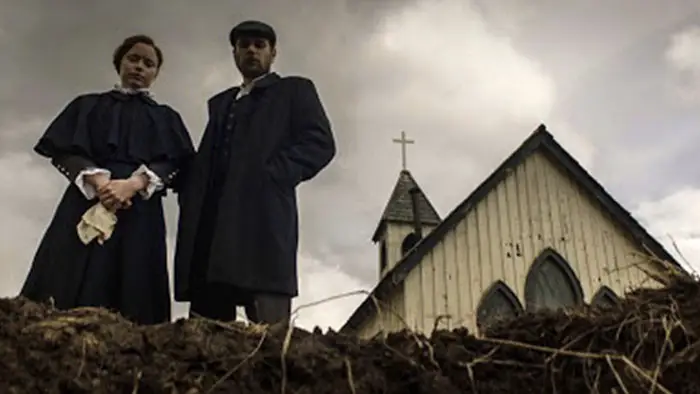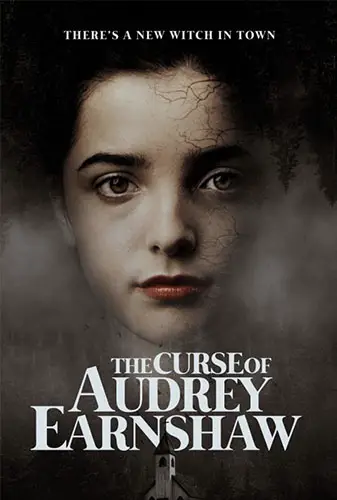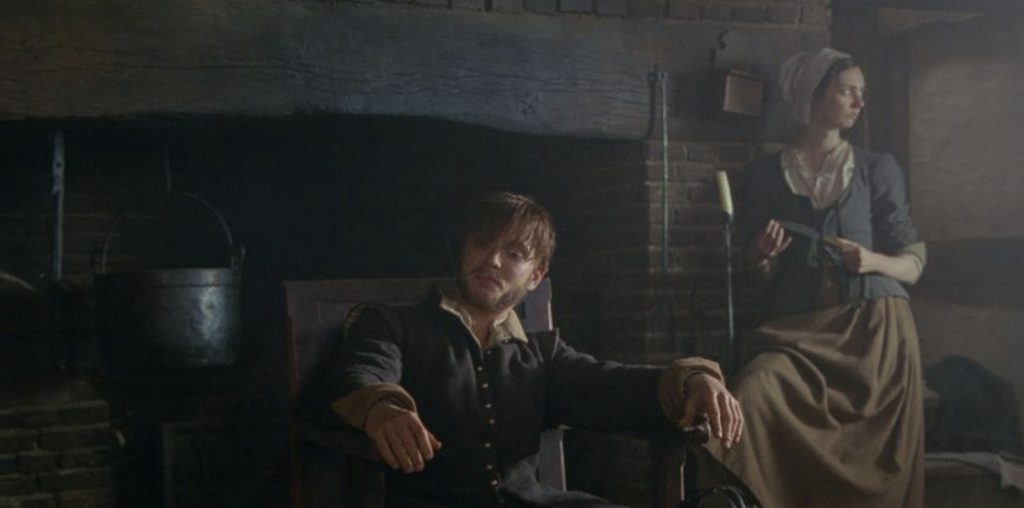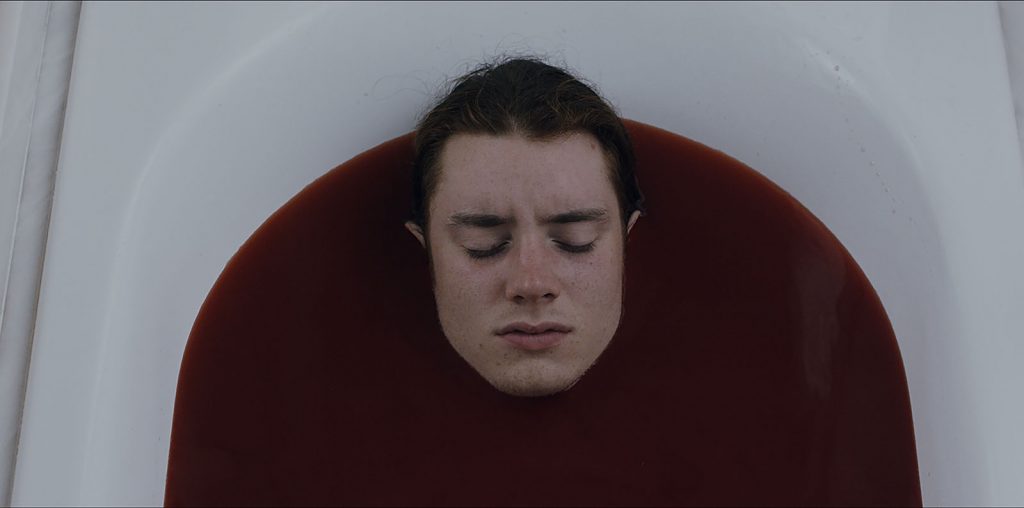
The central village in Thomas Robert Lee’s slow-burn horror feature The Curse of Audrey Earnshaw is utterly isolated from the outside world. Think the settlement in M. Night Shyamalan’s The Village, its inhabitants so resolved in secluding themselves from society, they’ve become oblivious to its progress. Similarly, Lee seems to have immersed himself so wholly into the dank and dark world of his imaginings that he’s forgotten about his audience.
The story takes place in 1973, but aside from a brief glimpse of a propeller plane, you wouldn’t know it. Established in 1873, the settlement consists of a group of Irish families who immigrated to the US and have stuck to their ways for a century. In 1956, during a famine, resident witch Agatha Earnshaw (Catherine Walker), who’s been shunned to the village’s outskirts, secretly birthed Audrey (Jessica Reynolds). As livestock and people around them perished, the Earnshaws prospered.
Now, when Colm’s (Jared Abrahamson) son passes away, he blames Agatha. “You don’t give a damn about anybody at all,” he spits, grabbing Agatha and punching her, as Audrey, hidden in the back of their cart, witnesses it. “Everyone knows what you are.” Are the Earnshaws witches, or have they been demonized throughout the decades? Lee promptly answers that question by portraying a grotesque ritual ceremony – indeed, witches they are, and now Audrey is out to exact revenge on Colm for slapping momma. If she curses the rest of the settlement along with him, then so be it.

“…Audrey is out to exact revenge on Colm for slapping momma.”
And curse she will. There’s Bernard (Don McKellar), who discovered Agatha’s secret offspring. Curse the bastard. May as well curse Colm’s wife Bridget (Hannah Emily Anderson), by impregnating her with a potentially demonic child. Curse the rotting apples, curse the withering livestock, curse the calves born with two bloody heads. Audrey is out of control, feelin’ her newfound power and unleashing it, to her mother’s horror.
Lee touches upon some intriguing themes and ideas. He explores basic human decency (or lack thereof). He examines prejudice, society’s penchant for shunning those who are different. He ponders the meaning of legacy and sacrifice, as well as the difference between complacency and maintaining one’s faith. The Curse of Audrey Earnshaw is highly atmospheric. Nick Thomas’s stellar camerawork immerses us into this monochrome, foggy, decrepit world.
Forever shunned by their people, the Earnshaws have had enough… only it’s Audrey, not Agatha, who stands up against them. A metaphor for a new, “take no s**t” generation taking over from a complacent one? This is left unclear, especially in the last 20 minutes or so, when the film descends into hysteria. Audrey’s character is never developed enough to become a symbol of feminism, strength, or progress. The lack of a clear or likable protagonist can be compelling in the right hands (see Justine in Julia Ducournau’s similar-but-infinitely-more-assured Raw), but Lee shoots himself in the foot here. Audrey comes off as a violent brat, her mother a helpless fool, and the villagers one-dimensional caricatures (the all-over-the-place accents don’t help).
With The Curse of Audrey Earnshaw, Lee has created a cinematic microcosm – atmospheric, containing powerful scenes, driven by some committed performances – that forgets to make a coherent point. The titular curse seems to be that of narrative ambiguity.

"…examines prejudice, society's penchant for shunning those who are different."


